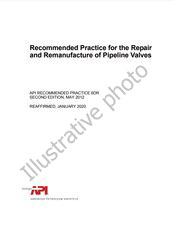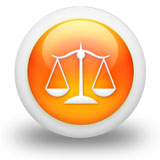We need your consent to use the individual data so that you can see information about your interests, among other things. Click "OK" to give your consent.

API MPMS 10.4-ed.5
Manual of Petroleum Measurement Standards Chapter 10.4 Determination of Water and/or Sediment in Crude Oil by the Centrifuge Method (Field Procedure)
Translate name
STANDARD published on 1.8.2020
| Availability | Sold out |
| Price | ONREQUEST excl. VAT |
| ON REQUEST |
The information about the standard:
Designation standards: API MPMS 10.4-ed.5
Publication date standards: 1.8.2020
SKU: NS-1139462
The number of pages: 34
Approximate weight : 102 g (0.22 lbs)
Country: American technical standard
*) If the goods is not available in stock and must be ordered at the publisher, the actual shipping and handling costs will be added. We will inform you about the details based on your request sent to info@normservis.cz, eventually dialing +420 566 621 759.
Annotation of standard text API MPMS 10.4-ed.5 :
API MPMS 10.4, 5th Edition, August 2020 - Manual of Petroleum Measurement Standards Chapter 10.4 Determination of Water and/or Sediment in Crude Oil by the Centrifuge Method (Field Procedure)
This section describes the field centrifuge method for determining both sediment and water or sediment only in crude oil. This method may not always produce the most accurate results, but it is considered the most practical method for field determination of sediment and water. This method may also be used for field determination of sediment. When a higher degree of accuracy is required, the laboratory procedure described in API MPMS Ch. 10.3, Standard Test Method for Water and Sediment in Crude Oil by the Centrifuge Method (Laboratory Procedure) (ASTM D4007); API MPMS Chapter 10.2, Standard Test Method for Water in Crude Oil by Distillation (ASTM D4006); or API MPMS Chapter 10.9, Standard Test Method for Water in Crude Oils by Coulometric Karl Fischer Titration (ASTM D4928); and the procedure described in API MPMS Chapter 10.1, Standard Test Method for Sediment in Crude Oils and Fuel Oils by the Extraction Method (ASTM D473) or API MPMS Chapter 10.8, Standard Test Method for Sediment in Crude Oil by Membrane Filtration (ASTM D4807) should be used.
The requirements of this standard may involve hazardous materials, operations, and equipment. This standard does not purport to address all of the safety problems associated with its use. The user of this standard has the responsibility for establishing appropriate safety and health practices and determining the applicability of regulatory limitations prior to use.
We recommend:
Updating of laws
Do you want to be sure about the validity of used regulations?
We offer you a solution so that you could use valid and updated legislative regulations.
Would you like to get more information? Look at this page.



 Cookies
Cookies
